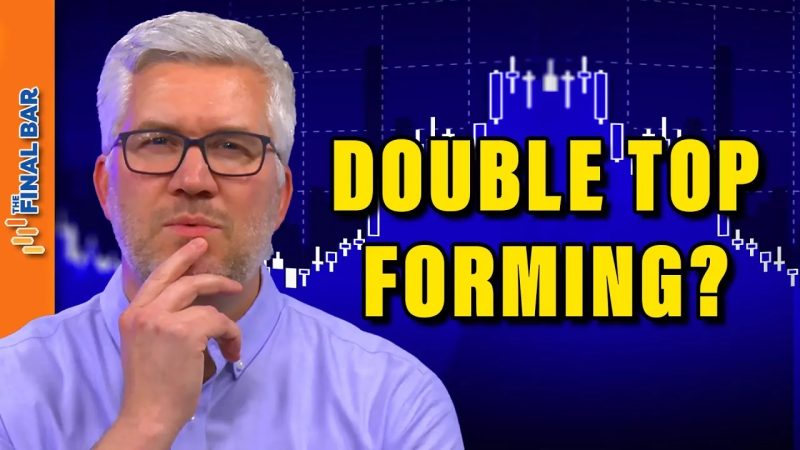Body of the Article:
In financial market analysis, understanding chart patterns is elemental to the trading and investment decisions. The aspect of value versus growth investing and the visualization of a double top pattern presents the opportunity to aid in the decision-making process of diversifying an investment portfolio. This article delves into the aspect of a double top forming in growth vs. value investments.
To begin with, it’s essential to understand what a double top pattern signifies. It’s a technical analysis pattern representing a M shape on a chart. The pattern is formed when the price of an asset, say a stock or index, reaches a particular high level twice, with a moderate drop in between—exemplifying the market’s strong resistance level. In essence, after the second peak, if the price falls down the support level that’s marked by the lowest point between the two peaks, it usually signals a bearish or downward trend.
The course of double top forming in growth versus value is a unique perspective to evaluate. Growth and value are two essential investment strategies where growth investing focuses on shares expected to grow at an exceptionally high rate compared to others on the market, whereas value investing involves buying stocks that are considered undervalued or cheaper than their intrinsic value.
Generally, growth stocks are characterized by their high volatility, which creates an environment conducive to the development of double top patterns. As these stocks rise quickly, they also tend to fall sharply, often retracing to the previous support level and hence, forming a double top.
Moreover, when a double top occurs within growth stocks, it could indicate that the accelerated growth phase may have capped and the stocks might not perform as well as they have in the past. This could be due to several reasons as next growth phase transitioning, changes in market conditions, or phototyped cyclical patterns.
On the other hand, the formation of a double top in value stocks sends a different signal. Due to the inherent stability and consistent performance, the formation of a double top could indicate a potential undervaluation, thus suggesting a timely exit from those assets before prices fall. Conversely, if the price breaks above the second peak, it may mean that the asset is undervalued, indicating a strong buying signal.
In juxtaposing growth vs. value, often a double top forming in one can foretell the performance of the other. This is because, historically, growth and value stocks have an inverse relationship. If growth stocks are forming double tops and reflecting a downturn, it could indicate an upcoming period of outperformance for value stocks, and vice versa.
On the macro level, examining whether a double top is forming in the relative performance of growth versus value stocks can also be a pivotal strategy. If a double top forms within this collective performance, it might suggest a reversal in favor of value stocks. However, if despite reaching a high the trend continues upwards, it might suggest sustained dominance of growth over value.
In conclusion, the double top forming in growth vs. value stocks can provide valuable insights for investors and traders for timing their investment decisions. It is imperative to understand that these formations do not guarantee a certain outcome; rather, they provide potential scenarios based on historical data and should not be the sole determining factor when making investment decisions. It’s equally important to undertake an in-depth fundamental analysis to validate the signals from technical analysis.




